Last month I shared a blog written by Lloyd Wilson, who grew up in Guildford in the 1940s and 50s. This month I want to share another Guildford story from Margaret Brown who was born at Guildford in 1935 and lived there until 1958.[1] She is the longest-serving resident born at Guildford. Anne Dunham interviewed Margaret in 2018. It was filmed by Winston Nickols and is available on YouTube (see https://you.tube/rvKJQBHw51A). Margaret agreed to a phone interview with myself and willingly shared stories about growing up in Guildford and her family’s vital work in the town. Here is her story.
Margaret was the youngest daughter of Frank and Pearl Burridge. Frank Burridge was born in 1906 at Hobart and married Pearl in 1926. They moved to Guildford in 1930 where Frank operated the rail motor between Waratah and Guildford. In 1940, he was transferred to Rosebery as relieving Station Master, returning to Guildford in 1942 as the Station Master, a job he retained until his retirement in 1965. The Burridge’s ran essential services in the isolated railway settlement – the signals and staff handover for the passing trains, porter services, the post office, the refreshment room for train travellers, and the licensed bar.
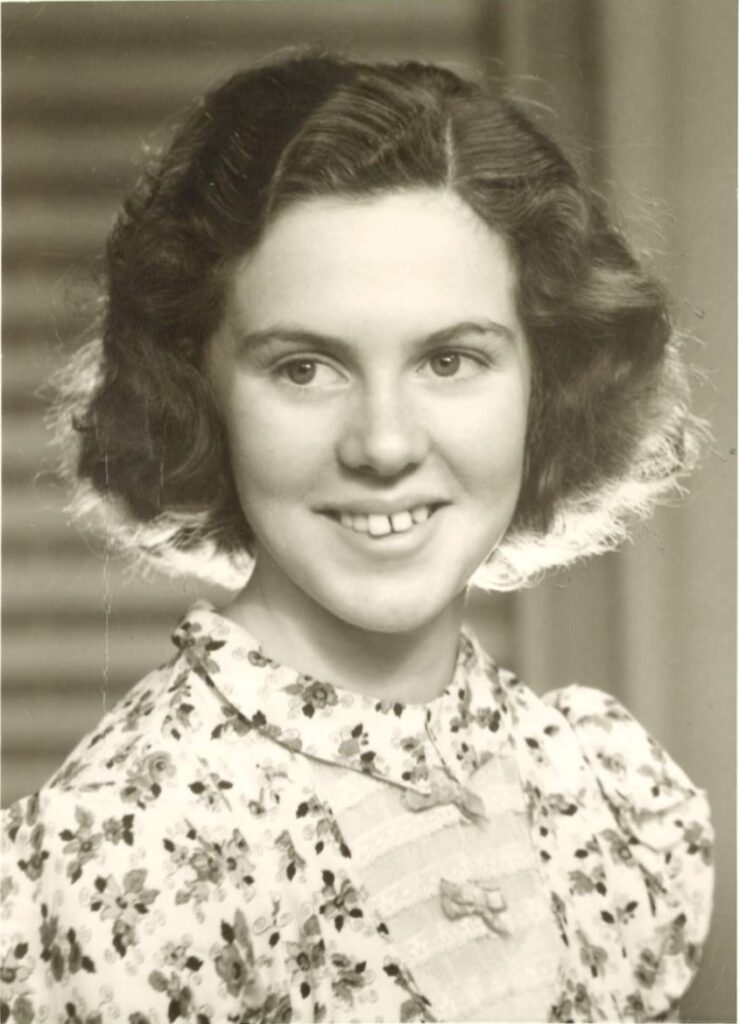
The Burridge’s lived in an old house next door to the railway station. Pre-World War II, midwife services were not easily accessible in such isolated locations. Margaret was born in Guildford with the help of old ‘Nana Godwin’ from Waratah, who acted as a midwife for the local births.
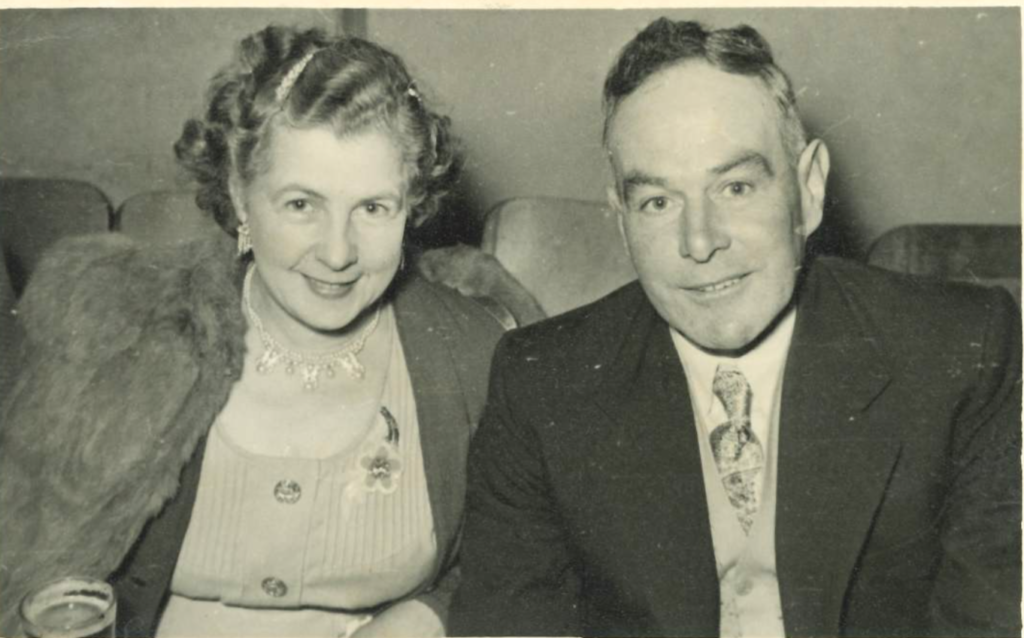
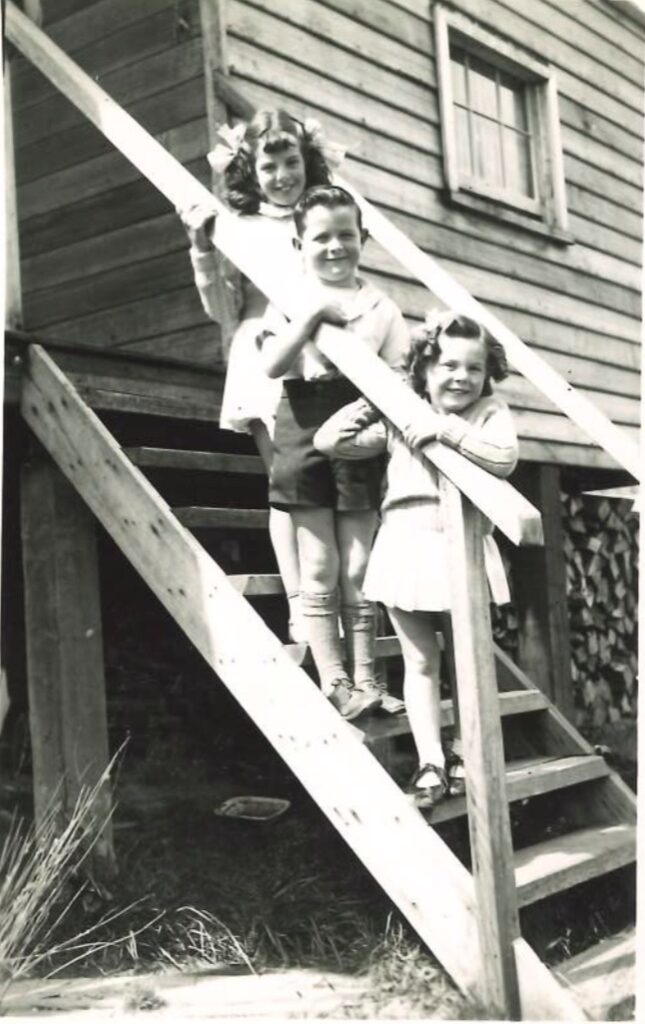
The running of the Guildford railway station was a family affair. Eldest daughter, Beverley (born 1931), assisted with the book work for the post office and the railway; Kevin (born 1932) was the porter, helped in the bar, and supervised the loading and unloading of vehicles from the ‘West Coaster’ in the early 1960s. Margaret had the task of measuring the water levels on the Hellyer River. Beverley would record the readings and send them to Hobart as part of her administrative duties. Margaret also helped her mother Pearl prepare the infamous ham sandwiches. She was often called home from school to help out in the refreshment room when it was busy.
Pearl wanted to provide a nice refreshment to travellers that was simple and easy to make. Frozen hams were delivered from Burnie by train and boiled in an iron pot of water for 3 hours and left overnight. The bread was delivered fresh each day from Burnie on the train. Porters would take orders from passengers travelling to Guildford and phone the details to Guildford from Hampshire or Farrell. Mother and daughter would then busily prepare the ham sandwiches. Four quarter sandwiches and a cup of tea cost one shilling. There was no power at Guildford until 1951, and the ham and water boiled on a wood stove. The ham was stored wrapped in a calico cloth inside a meat safe. Margaret recalls the refreshment room supplied hot pies after they purchased a pie warmer during its later years.
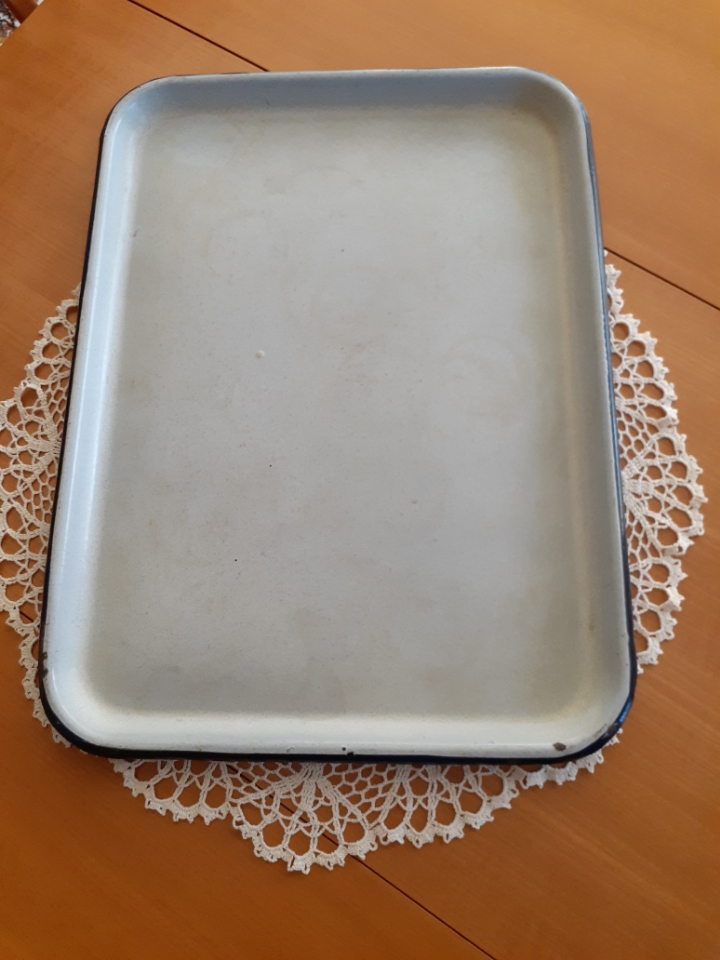
Without television and limited access to the outside world, Margaret said the kids easily kept themselves occupied playing in cubby houses in the old pine trees, making mud pies, fishing and exploring the neighbouring bush. Margaret recalls spending a lot of time in a cubby house built by neighbour Mr Pitham. It had a window and curtains, a usable fireplace, a kid’s table and chairs and real pots and pans for cooking. One annual celebration the children looked forward to was the school Christmas break. There was a Christmas tree, and Santa Claus presented each child with a gift from the tree. The remainder of the night was usually spent dancing to Harrington’s orchestra. Frank Burridge acted as Santa until Margaret was about nine years old when she realised Santa was her father.
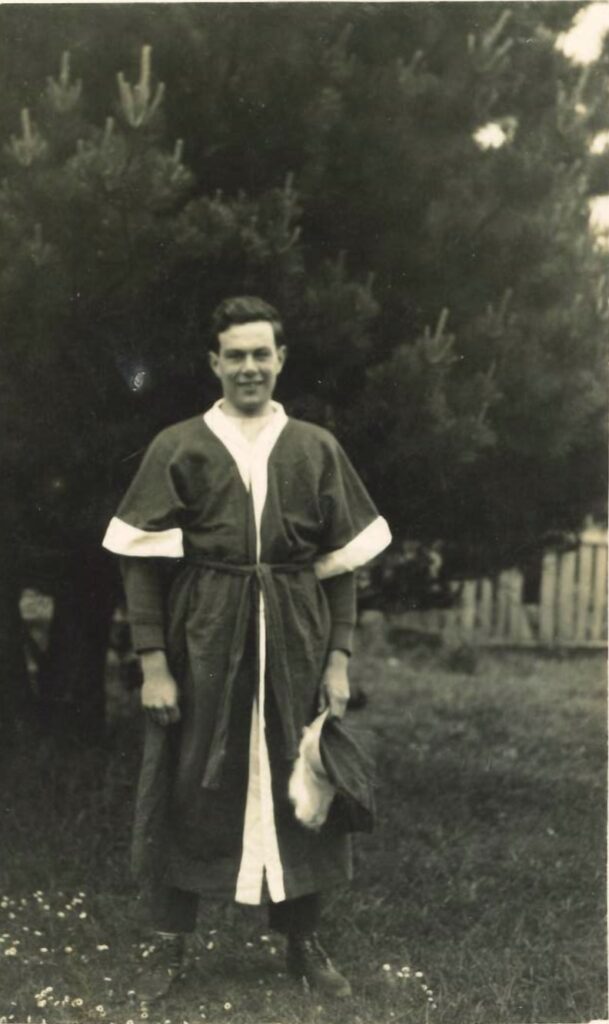
Margaret fondly recalls her school days at Guildford. The one-roomed school building catered for all primary school grades. She has many kind words for her teachers Florence Grainger and Ruby Wilson. They were long-standing and much respected and loved teachers at the Guildford school. Her school uniform was a skirt and gumboots with a coat, and the kids would walk the short distance home for lunch each day.
Formal social activities centred around the small hall at Guildford. Dances were popular, and the children would decorate the hall with tree ferns, bronze chrysanthemums and local native flowers, as well as coloured streamers and balloons. Beverley often played on the piano in the Burridge house. When there were concerts, the piano was sent on a trolley to the hall. Mr Wily Gillard would come from Waratah to play the melodeum[2] as the revellers danced to his music and foot tapping. Beverley was declared ‘Belle of the Ball’ at many dances, including the Church of England ball in Waratah in May 1949. That same month the regular shifting of the piano ceased after APPM donated a piano to the hall. As was customary for such an occasion, a formal dance night was organised. Then school teacher, Michael Cody and his wife Lilian, were presented with parting gifts after 11 months in Guildford.[3] Other events, such as euchre nights, were also organised at the hall. Another memorable celebration was the end of World War II. Margaret recalls a big party was held in Guildford to celebrate the occasion.
The Burridge family were heavily involved in the dance committees set up to organise these important social events. Without power, Tilley lamps were hung on the dance hall walls to provide light for the guests. Occasionally Guildford residents would venture to nearby Waratah for dances and balls. The local newspaper covered one such event in September 1954. Busloads of adults and children journeyed from Guildford for the children’s plain and fancy-dress ball organised by the Waratah State School’s Parents and Friends Association. There were plenty of prizes to go around, and Margaret won the award for the ballerina-length frock. After the children’s festivities, the adults later danced. Margaret also won the chocolate waltz on several occasions with a dance partner, including as a young teenager at the Parents and Friends Association dance in November 1949.
Luke Etchell spent most of his later years at Guildford. He was an accomplished bushman and was a regular snarer during the proclaimed hunting seasons in winter. Luke would regularly visit the Burridge house, and Margaret recalls Luke taking the children out to the bush to collect waratah flowers. He would then arrange the posies, and the children would wait at the railway station and sell their Waratah flowers to train passengers.
Chapter 7 of my book “Fires and Farms and Forests” details the snaring activities on Surrey Hills. Kevin Burridge used to take a cart full of food and replenishments to the snarers camped in their huts on Surrey Hills during the hunting season in winter. Once a year, at the end of the season, Guildford used to host the auction of furs. It was a big event, and Pearl Burridge would prepare a large pot of saveloys and potatoes to feed the attendees.
The Burnie Sports Carnival, held over the New Year, was a huge local event attended by people from the west coast. On New Years Day, a special train would leave Zeehan and stop at Guildford in the morning via Rosebery and Queenstown. It would return late in the evening, stopping at Guildford just after midnight. Margaret and her mother would be busy catering for the passengers, while Frank and Kevin had their hands full serving drinks in the bar.
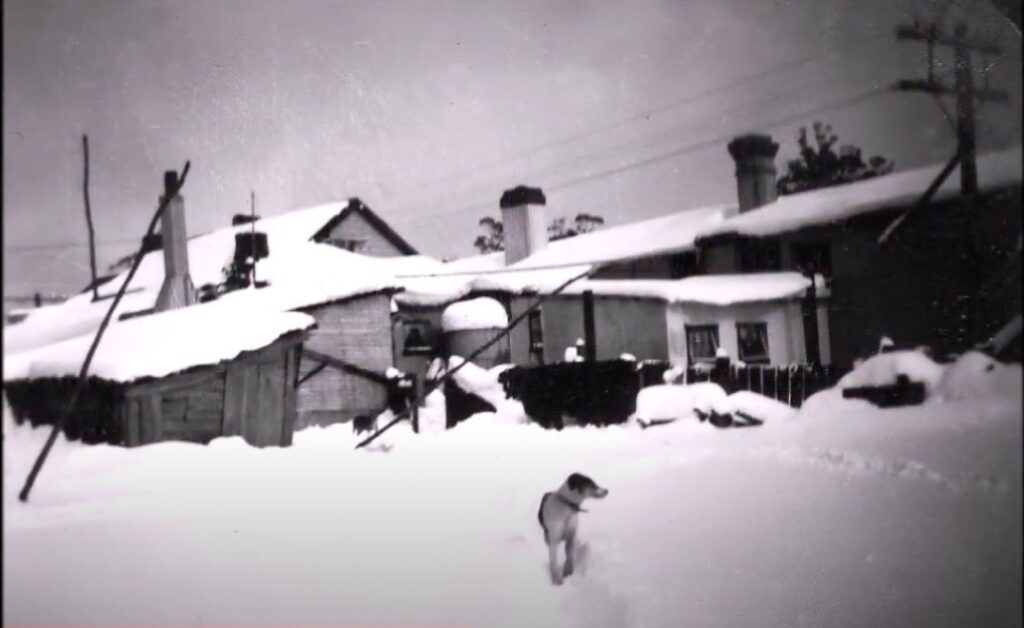
Badminton was a popular indoor sport at Guildford, and weekly competitions were held in the small hall. The Burridge’s held committee positions of the Badminton Club, with Beverley performing secretary duties and Frank as treasurer in the early 1950s. The hall wasn’t wide enough to accommodate the full-size badminton court, so a line was drawn on the side of the wall to signify the boundary. The competition included teams from Waratah, and games were shared between both venues. Suffice to say, the Waratah players always made sly remarks about the size of the Guildford court.[4]
Snowfalls were a regular occurrence at Guildford, as detailed in my book. Margaret recalls times when the snow reached the front picket fences of the houses and residences. They had to dig the snow away so they could attend school. Today, the snowfalls are much lighter than earlier days when Margaret remembers how thick it was and how long it stayed on the ground.
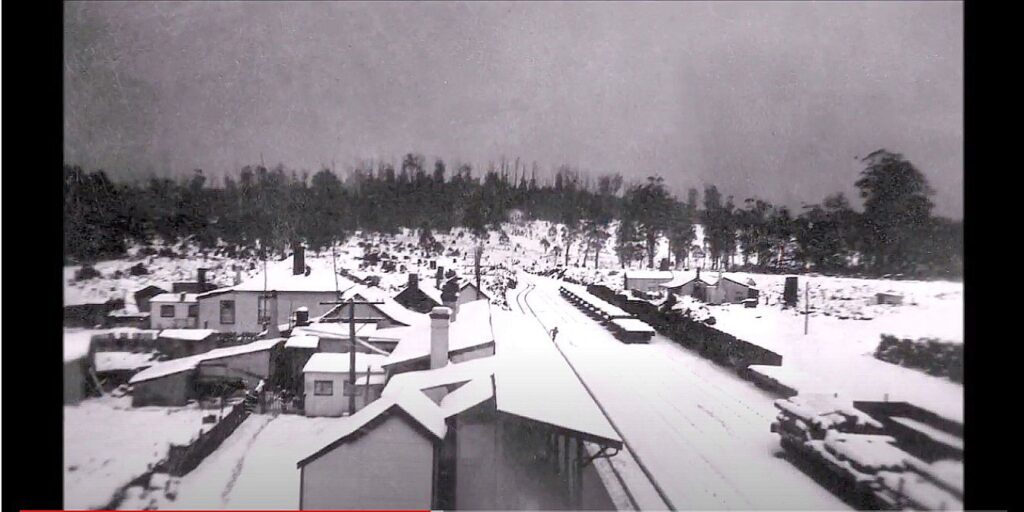
In last month’s blog (see https://www.robertonfray.com/2021/01/29/growing-up-in-guildford/), Lloyd Wilson outlined how his father, Charlie, was the Guildford nominee for the Civil Defence League. He had to ensure mandatory blackouts were enforced in the town during World War II, particularly in early 1942 when the Japanese invasion of the mainland was a real possibility. It is remarkable that isolated outposts in north-west Tasmania, and so far from the real threats of attack, were subject to these requirements. Margaret recalls how frightened the children and residents were of the potential danger. There was an underground air raid shelter built in Guildford. Waratah used a large bell as their warning siren. Blackout tests were usually for an hour from 9:30 pm, and residents were required to have all their windows properly screened. Air Raid Precaution Committees were made up of prominent local people in most major towns around Australia, including Waratah, which covered Guildford.
After 54 years as a settlement, Guildford finally received electric power on 24 August 1951. The ceremony to celebrate this momentous event was a big affair. More than 200 residents, former residents and other visitors attended the ceremony at Guildford. The official dignitaries were the Warden of Waratah Councillor Joe Fagan, Senator Jack Chamberlain,[5] Mr Aubrey Luck MHR,[6] Messrs Tom D’Alton MLC[7] and Arthur William Tattersall MLC,[8] Jack Fidler,[9] and Mr H. K. Shirrefs from APPM. The oldest Guildford native, Margaret Brown, and the longest-serving resident, Charlie Wilson, performed the official switching on of the power.[10] Pearl Burridge and her daughters supplied supper for the distinguished guests with the help of the Wilson family and other Guildford residents.
Margaret knew Alan Brown from their school days. Alan grew up in Waratah, and during their courtship, he would ride his bike 11 miles to see Margaret at Guildford and ride home later that day. He often displayed great skill in carrying refreshments on the handle-bar – namely a carton of beer! Margaret would sometimes ride her bike part of the way, and they would meet in between the towns. Margaret began work in Ulverstone and at the Burnie hospital when she finished school. She married Alan in 1958 and moved to Waratah, where Alan was a clerk at the post office and the local Council. They moved to Burnie after Alan got a job as Chief Clerk at the Burnie Council. They had two children, Craig and Carol. When Frank retired in 1965, he moved to Burnie and lived with Alan and Margaret until he passed away in 1979.
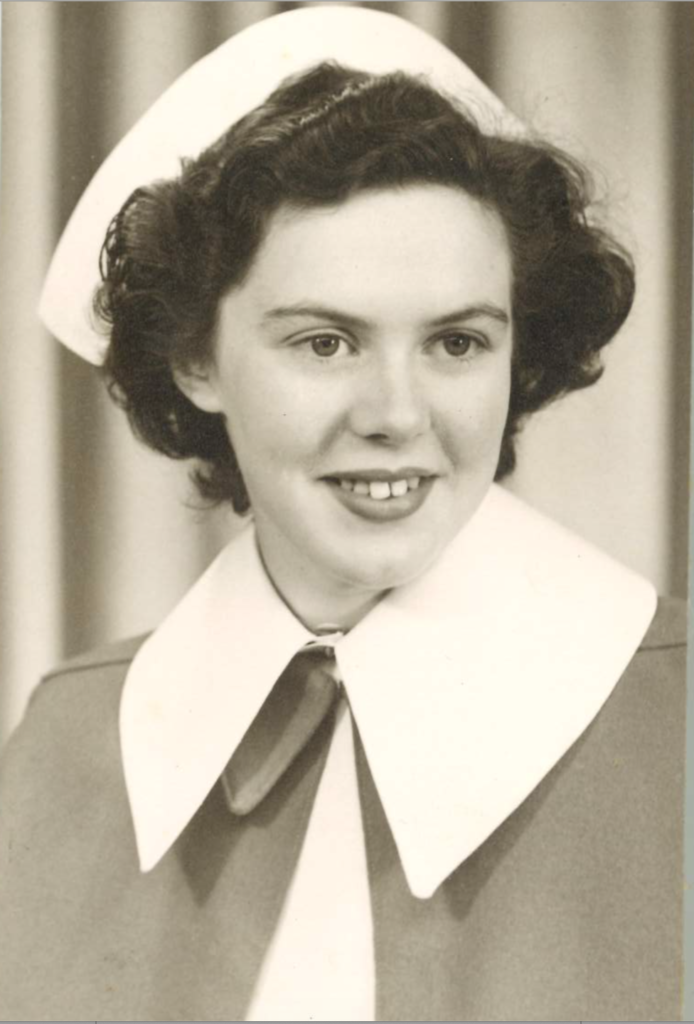
As I reported in my book, Frank Burridge was a well-respected resident of Guildford. He and his family not only volunteered their time to work on local committees, Frank also served as a Warden on the Waratah Council. Any remembrance of Guildford would be amiss without recognising the contribution of the Burridge family to the town’s efficient running and its social life. The bar at Guildford closed when the Murchison Highway was opened to the west coast in 1963. Margaret recalls a big night of celebration to end such a significant establishment that had replenished many Guildford residents and visitors’ thirst for over 60 years. Not long after this, Frank retired to Burnie, and the family involvement at the town disappeared with his move. As we know, this precipitated the decline of Guildford. The school closed a few years later, and the Emu Bay Railway Company announced the railway station’s closure. The residents gradually moved elsewhere. The town disappeared when the buildings were dismantled and removed.
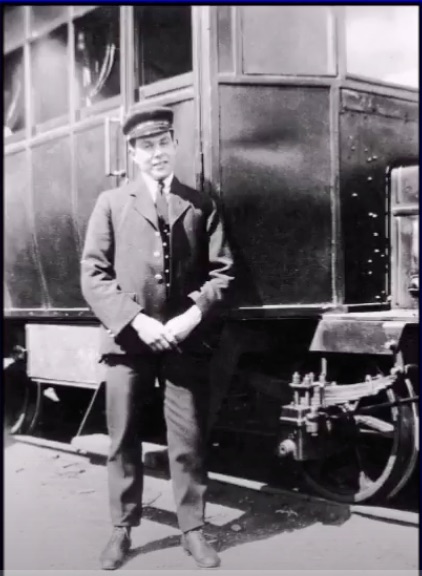
Margaret Brown, the surviving member of the Burridge family, is a testament to the humble and gracious way they lived their lives and gave so much back to their community. It is with much gratitude that she shared these wonderful memories of her early life in Guildford.
[1] Margaret did leave Guildford for a short period after finishing school to work in Ulverstone and Burnie. She was back living in Guildford when she married Alan Brown.
[2] A melodeum is a small keyboard organ in which the tones are produced by drawing air through metal reeds by means of a bellow operated by pedals
[3] More details about Michael Cody and his stay in Guildford, including the tragic reason for his departure are outlined in my book “Fires, Farms and Forests” on pages 154-5.
[4] In 1971, Margaret joined the Burnie Housewives Badminton Club, and she has played every year since. This year is her 50thyear and will be marked with a celebratory lunch. She is the oldest and longest member of the club.
[5] John Hartley (Jack) Chamberlain was elected to Parliament as the United Australia Party member for Darwin in 1934. He was Deputy Leader of the Liberal Party and the Opposition in 1950-51. In 1951 he was elected to the Senate as the Liberal Senator for Tasmania and died in 1953 while still in office.
[6] Mr Aubrey William George Luck was an outstanding citizen of north-west Tasmania. He was a member of the Tasmanian Parliament from 1951 to 1958 representing the north-west seat of Darwin, which changed to Braddon in 1955. He was instrumental in improving the Bass Strait shipping service by introducing the first vehicular ferry, the Princess of Tasmania, which saw the beginning of a steady growth of Tasmania’s tourism industry.
[7] Tom D’Alton had an interesting and lively political career. He served as a Minister in Ogilvie and Cosgrove governments. In 1943 he was appointed high commissioner to New Zealand. While there he boasted ownership of the best diplomatic cellar in Wellington and was proud of his social successes. However, his involvement in a fist fight at a theatre dented his social standing. One of his Ministerial portfolios was Forestry and when a royal commission was appointed in 1945 to investigate forestry administration, he refused to give evidence. He was cleared of charges of corruption but was found to have twice accepted bribes. He resurrected his political career a few years later in the Legislative Council becoming an effective politician. However, scandal followed him when he was renowned for his drinking and sometimes questionable associations.
[8] Arthur Tattersall was a politician and was elected to the Legislative Council as the independent member for West Devon in 1947, serving until his retirement in 1953.
[9] For more information on Jack Fidler see my post https://www.robertonfray.com/2020/11/26/a-distinguished-north-west-tasmanian/
[10] For more information of Charlie Wilson see https://www.robertonfray.com/2021/01/29/growing-up-in-guildford/
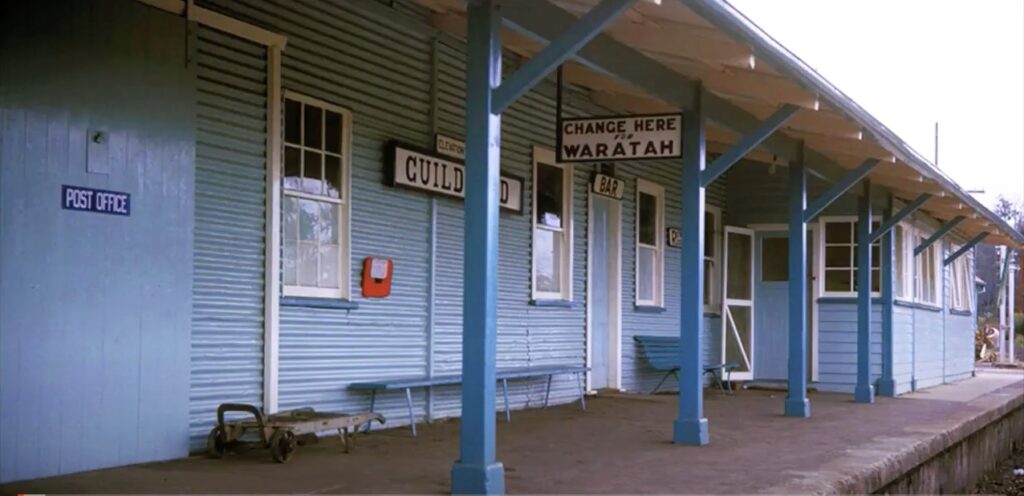
Thank you Robert, some more gaps in my knowledge filled in.
The sandwiches at Guildford were outstanding and I still can taste them. I often bought extras for lunch. As an escort for the paymaster trip, we were served with a special package which contained a bottle of beer.
Herbert….I can only say I have heard your same comment a thousand times and I so wish I could have tasted those darn sandwiches. They must have been very special…or everyone was just hungry!!!!!
Thank you Robert for recording these great memories and stories….otherwise one day they would have been lost. A great way to preserve for our future generations…
Excellent effort Robert and Margaret. Thank you Margaret for taking the time to pass on some of your informative and, no doubt, treasured memories of Guildford. You have reminded me of some things I had forgotten about. Well done!
Thankyou for that great story regarding the Burridge Family.
I am a descendant of the Burridge line;
(K Burridge-St George/Kogarah)
Kind Regards,
Jennifer Marion Burridge
I remember when we first got power at Guildford the APPM first installed a hand cranked generator for the town and it had to be started manually. My mother Lurlie Berwick used to have to crank the generator by hand, and us kids had to drop the decompression levers when she got it cranking fast enough.
I had to do this everyday about 4pm. There was a power pole that had earth problems and I think it was Lloyd Wilson who found out he hard way that you could get a shock by just standing at the base of the power pole with you feet spread.
A few of us kids used to pick bunches waratah to sell to the passengers from the passing trains from and to the west coast for sixpence or if we were lucky we sometimes got a shilling.
There was a 1 teacher school that taught grades 1A to 6. To progress further you had to bus to Waratah. I must have been a bit brainy cause when I went there I did grade 1B and grade 2 in one year. I think Mrs Quillam was my teacher – a great teacher.
Every Christmas they had a big party in the railway hall. Ron Hall or my father, Trevor Berwick, used to play Santa Clause for the kids arriving at the hall sitting on the roof of a short wheel based Land Rover.
There was a bit of a divide with the railway people living along the railway line and the APPM workers living along Jockey Street.
We moved there when I was about four and left when I was about nine years old. Some great people lived there – the Burridges, the Wilsons, the Coxes, the Reynolds, the Smiths, the de Boers, the Strudwicks. I really enjoyed my early years at Guildford.
Thank you Robert and Auntie Margie for recording these memories. It has always been heart warming and brought a smile to my face when I hear stories of my family.
I will pass this on to my children the grandchildren of Kevin Burridge.
Many thanks
Lynne Burridge
So interesting to read this, thank you Margaret.
I lived in Guildford Junction as a young child and can remember picking and selling Waratah on the Station platform with Mum beside me. I remember the man playing the Melodeum at the Station. The little one teacher school and warming our hands by the fire.
We lived by the railway line down past the hall and across from Huts just before the fork in the rail line. There was a big Water Wheel across from our house. Strawberry the Cow lived across from our side fence. We had electricity but it may have been run by a generator. Dad (Jim Clark) worked on the railway. I started School at Guildford Junction so must have been 5 then. I think Mrs Quillam was the teachers name, we left around 1950.
I very much enjoyed your story Margaret and I’m sure many others readers would have too.
Laurel Obray (nee Clark)